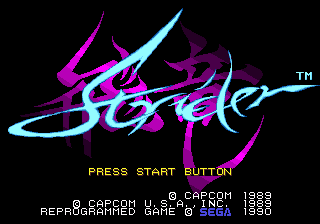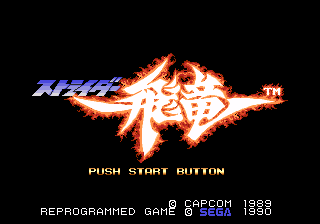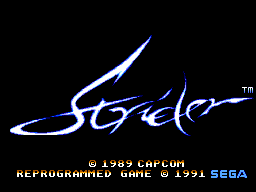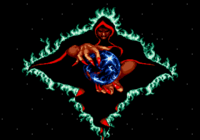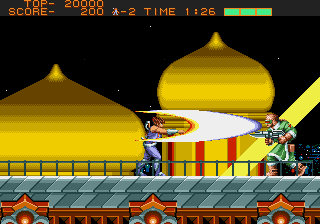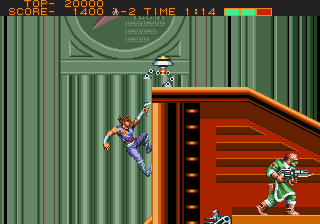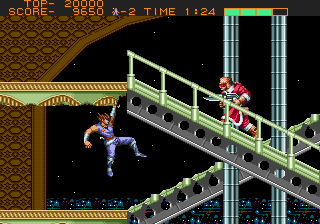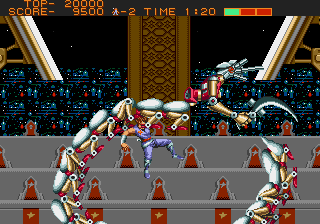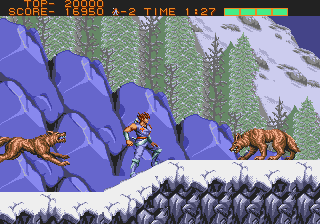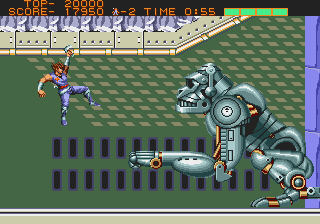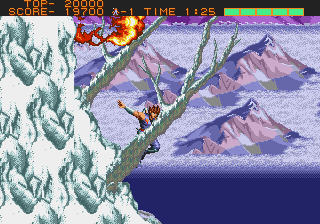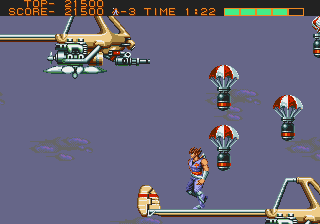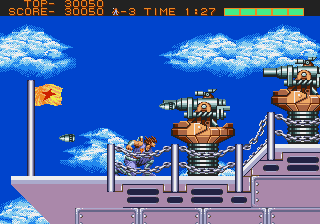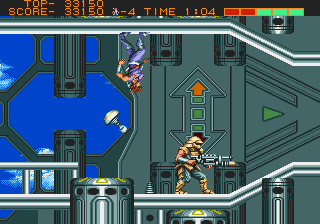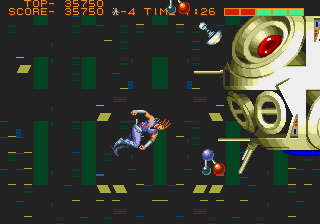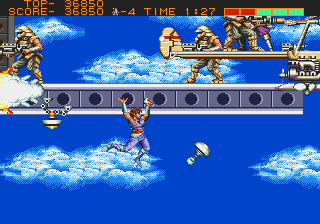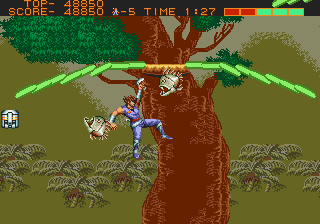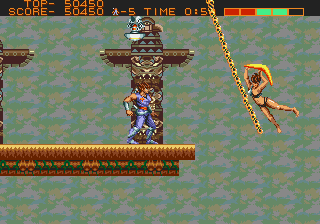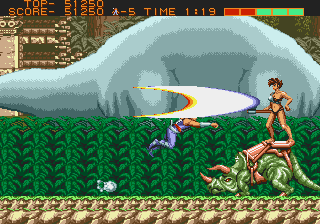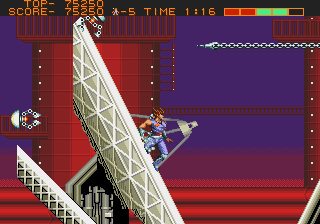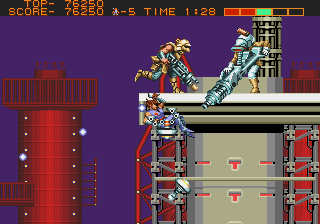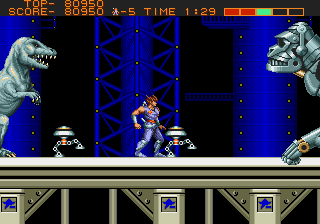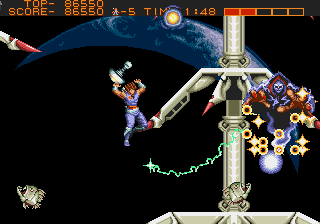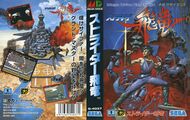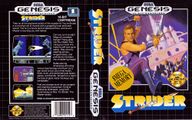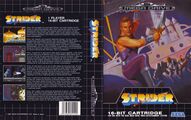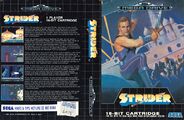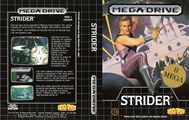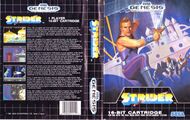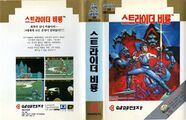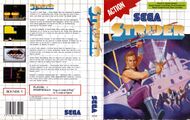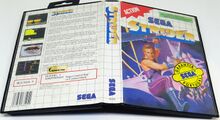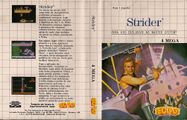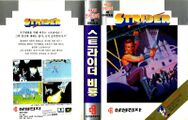Difference between revisions of "Strider"
From Sega Retro
| Line 72: | Line 72: | ||
}} | }} | ||
{{releasesSwitch | {{releasesSwitch | ||
| − | | switchonline_date_jp=2021-10- | + | | switchonline_date_jp=2021-10-26{{ref|https://web.archive.org/web/20211026030416/https://store-jp.nintendo.com/list/software/70010000046986.html}} |
| − | | switchonline_date_us=2021-10-25 | + | | switchonline_date_us=2021-10-25{{ref|https://archive.ph/Q1rJk|https://twitter.com/NintendoAmerica/status/1449023950957252646}} |
| − | | switchonline_date_eu=2021-10- | + | | switchonline_date_eu=2021-10-26{{ref|https://archive.ph/DfKlt|https://twitter.com/NintendoEurope/status/1449031563715530753}} |
| + | | switchonline_date_uk=2021-10-26{{ref|https://archive.ph/mgq51|https://twitter.com/NintendoUK/status/1453019027635412996}} | ||
| + | | switchonline_date_au=2021-10-26{{ref|https://archive.ph/X8J2r|https://twitter.com/NintendoAUNZ/status/1452816937591836675}} | ||
}} | }} | ||
| otherformats={{NonSega|Arcade|Amiga|CPC|ST|C64|IBMPC|X68|ACDROM2|Spectrum}} | | otherformats={{NonSega|Arcade|Amiga|CPC|ST|C64|IBMPC|X68|ACDROM2|Spectrum}} | ||
Revision as of 23:26, 24 October 2022
| Strider | |||||||||||||||||||||||||||||||||||||||||||||||||||||||||||||||||||||||||||||||||||||||||||||||||||||||||||||||||||||||||||||||||||||||||||||||||
|---|---|---|---|---|---|---|---|---|---|---|---|---|---|---|---|---|---|---|---|---|---|---|---|---|---|---|---|---|---|---|---|---|---|---|---|---|---|---|---|---|---|---|---|---|---|---|---|---|---|---|---|---|---|---|---|---|---|---|---|---|---|---|---|---|---|---|---|---|---|---|---|---|---|---|---|---|---|---|---|---|---|---|---|---|---|---|---|---|---|---|---|---|---|---|---|---|---|---|---|---|---|---|---|---|---|---|---|---|---|---|---|---|---|---|---|---|---|---|---|---|---|---|---|---|---|---|---|---|---|---|---|---|---|---|---|---|---|---|---|---|---|---|---|---|---|
| System(s): Sega Mega Drive, Sega Master System, Virtual Console, Nintendo Switch Online | |||||||||||||||||||||||||||||||||||||||||||||||||||||||||||||||||||||||||||||||||||||||||||||||||||||||||||||||||||||||||||||||||||||||||||||||||
| Publisher: Sega | |||||||||||||||||||||||||||||||||||||||||||||||||||||||||||||||||||||||||||||||||||||||||||||||||||||||||||||||||||||||||||||||||||||||||||||||||
| Developer: Sega R&D 2[1] Tiertex M2 | |||||||||||||||||||||||||||||||||||||||||||||||||||||||||||||||||||||||||||||||||||||||||||||||||||||||||||||||||||||||||||||||||||||||||||||||||
| Licensor: Capcom | |||||||||||||||||||||||||||||||||||||||||||||||||||||||||||||||||||||||||||||||||||||||||||||||||||||||||||||||||||||||||||||||||||||||||||||||||
| Original system(s): Capcom CPS-1 | |||||||||||||||||||||||||||||||||||||||||||||||||||||||||||||||||||||||||||||||||||||||||||||||||||||||||||||||||||||||||||||||||||||||||||||||||
| Developer(s) of original games: Capcom | |||||||||||||||||||||||||||||||||||||||||||||||||||||||||||||||||||||||||||||||||||||||||||||||||||||||||||||||||||||||||||||||||||||||||||||||||
| Sound driver: SMPS 68000 | |||||||||||||||||||||||||||||||||||||||||||||||||||||||||||||||||||||||||||||||||||||||||||||||||||||||||||||||||||||||||||||||||||||||||||||||||
| Genre: Action[2][3][4][5][6] | |||||||||||||||||||||||||||||||||||||||||||||||||||||||||||||||||||||||||||||||||||||||||||||||||||||||||||||||||||||||||||||||||||||||||||||||||
| Number of players: 1 | |||||||||||||||||||||||||||||||||||||||||||||||||||||||||||||||||||||||||||||||||||||||||||||||||||||||||||||||||||||||||||||||||||||||||||||||||
| |||||||||||||||||||||||||||||||||||||||||||||||||||||||||||||||||||||||||||||||||||||||||||||||||||||||||||||||||||||||||||||||||||||||||||||||||
|
Strider, known as Strider Hiryuu (ストライダー飛竜) in Japan, is an action game developed by Capcom and released for CPS arcade hardware in 1989. It was subsequently brought to home consoles and computers, including the Sega Mega Drive and Sega Master System.
Contents
Story
It is the 21st Century. Earth is ravaged by series of ecological disasters that claimed the lives of millions. Out of the catastrophe, one man took control of what remains of the human race: Grandmaster Meio, a seemingly immortal and omnipotent man who is worshipped as a living god by his followers. With science, military and even nature itself on his side, Meio declared himself Emperor and formed the center of his empire in the Kazafu City, a massive city located in the Eastern Europe. He rules the world with an iron fist.
The only force that can stop this man is the Striders, a group of highly talented operatives who are skilled in infiltration, sabotage and assassination. Stiders initiated a massive assault on the Meio's forces, but despite their skills, all of them were cut to the last man.
Enter Strider Hiryu, youngest man to ever complete the hellish Strider training program with an A rank and only Strider left alive. Armed with his lethal plasma sword, climbing equipment, and a small amount of robotic weapons, Hiryu must face insurmountable odds and save humanity from the clutches of an evil god.
Gameplay
Strider is an action platformer. The protagonist, Hiryu, an agile ninja armed with a cypher, a plasma sword with a tonfa-like hilt. Hiryu moves with ![]() and
and ![]() and crouches with
and crouches with ![]() . Pressing
. Pressing ![]() or
or ![]() while Hiryu is standing still does a regular vertical jump, while pressing
while Hiryu is standing still does a regular vertical jump, while pressing ![]() +
+![]() /
/![]() or
or ![]() +
+![]() /
/![]() does a cartwheel jump. Hiryu can also slide under or through certain obstacles and enemies with
does a cartwheel jump. Hiryu can also slide under or through certain obstacles and enemies with ![]() +
+![]() /
/![]() . As well as his sliding move, both jumps can also be used to destroy weaker opponents. Hiryu is able to latch onto certain platforms, and climb across walls and ceilings using a metallic hook. While running down a sloped surface, Hiryu can gain enough momentum to allow him to do a longer cartwheel jump than usual.
. As well as his sliding move, both jumps can also be used to destroy weaker opponents. Hiryu is able to latch onto certain platforms, and climb across walls and ceilings using a metallic hook. While running down a sloped surface, Hiryu can gain enough momentum to allow him to do a longer cartwheel jump than usual.
Hiryu's main armament is his cypher, Falchion, which he can swing with ![]() . Hiryu can swing his cypher while jumping or crouching. The blade does damage in a wide area in front of Hiryu, which can be further extended by items. In addition, Hiryu can find items that summon robotic companions known collectively as "options" that help him fight enemies. These consist of up to two mushroom-like droids, a saber-toothed robotic tiger, and a robot hawk.
. Hiryu can swing his cypher while jumping or crouching. The blade does damage in a wide area in front of Hiryu, which can be further extended by items. In addition, Hiryu can find items that summon robotic companions known collectively as "options" that help him fight enemies. These consist of up to two mushroom-like droids, a saber-toothed robotic tiger, and a robot hawk.
Stages are divided into a number of smaller sections. Stages have a 90-second time limit that is reset when the player reaches certain checkpoints. Hiryu has a three-point health gauge (which can be increased up to five points by finding items). Hiryu loses a life if his health gauge is fully depleted, if he falls into a bottomless pit, or if the game's timer reaches zero. The game ends when all of Hiryu's lives are lost, but the player can be given the opportunity to continue.
Options
| Option A | |
|---|---|
| A mushroom-shaped drone with legs that follows Hiryu around and attacks enemies. It shoots a ring-shaped projectile whenever Hiryu swings his blade. It is found by collecting its item from an item container. Hiryu can have up to two of these at a time. When he finds one, it turns the rightmost green health block to red and lasts until that red health block is lost or until Hiryu loses a life. | |
| Option B | |
| A robotic feline resembling a saber-toothed tiger. It can be found in item containers if Hiryu already has two Option As. It replaces the red health blocks with yellow and replaces the Option As for a duration or until Hiryu takes damage. | |
| Option C | |
| A robotic hawk that circles the skies and dives to attack foes. Unlike the other options, it spawns directly from an item container (without needing to pick up an item) and does not change the color of any of Hiryu's health blocks. It lasts for a short duration. |
Items
| Container | |
|---|---|
| Break open to release an item. | |
| Cypher | |
| Upgrades Hiryu's cypher, increasing its power and reach. | |
| Extra Life | |
| Gives the player an extra life. | |
| Invincibility | |
| Makes Hiryu momentarily immune to enemy attacks. | |
| Hi (飛) | |
| Restores one block of Hiryu's health. | |
| Ryu (竜) | |
| Extends Hiryu's health gauge by one bar, up to five bars total. Lasts until he loses a life. | |
| Hiryu (飛竜) | |
| Completely restores Hiryu's health. | |
| 200 Points | |
| Awards the player 200 bonus points. | |
| 400 Points | |
| Awards the player 400 bonus points. | |
| Option A | |
| Summons an Option A to follow Hiryu, up to two. When collected, it turns the last of Hiryu's green health blocks to red. The drone stays with Hiryu until its corresponding red health block is lost. | |
| Option B | |
| Summons an Option B to follow Hiryu. This item is only found if Hiryu already has two Option As. It replaces them with an Option B for a duration, turning their red health blocks to yellow. If Hiryu takes damage, the Option B reverts to two Option As (or one Option A if he loses one of the yellow health blocks). |
Stages
| Kazafu City | |
|---|---|
| Emperor's official seat of power, Kazafu City is the a massive sprawling metropolis. Even though they are better off compare to the poor souls living in other destroyed cities around the world, citizens live under mortal fear of Meio's fanatically loyal army and soulless robotic weapons that patrol the city. Engage armed soldiers who still stick to their cold-war era uniforms. Eliminate Strobaya, a muscle bound giant and face off the assembly members who will combine and create Ouroboros, a caterpillar like robotic weapon who can climb walls and attack with sickle like mandibles. | |
| Siberian Wilderness | |
| Endure freezing cold as you fight back hungry wolves and other armed enemies. Destroy Mecha-Pon, a prototype robotic gorilla and climb through the salt mine shafts. Solo, a relentless, jet-pack equipped bounty hunter will be after your head. Retire him from his mercenary career if you don't want him to be a problem for you in the future. Reach the air field and jump from aircraft to aircraft to reach Meio's battleship. Be on the lookout for Pooh sisters, peerless martial artists who will attempt to kill you in the name of their emperor. | |
| Flying Battleship Balrog | |
| A symbol of Meio's limitless power, Balrog is a flying battleship capable of razing cities to rubble. Evade cannons and other gun emplacements as you try to find a way inside the ship's hull. Destroy the prototype graviton generator and relieve the Captain from his post to bring this flying monster to the ground. | |
| The Amazon Forest | |
| Humid jungles of the South America will be a stark contrast to the freezing cold of the Siberia. Fight back the female warriors of the Amazon tribe somehow managed to survive the outside world and its demise. Survive the onslaught of once believed extinct dinosaurs. A gigantic T-Rex will be waiting for you at the end of this level. | |
| Space Station "Third Moon" | |
| Prepare for the final showdown with a god. Every enemy you have faced before will be ready to lay down their lives for their emperor. At the end of the level, you will find out whether or not Meio deserves his title. |
History
Legacy
Multiple other versions of Strider exist, all of which (bar the aforementioned X68000 version) are widely considered to be less accurate than the Mega Drive version. Ports were made to the Amiga, Amstrad CPC, Atari ST, Commodore 64, DOS and ZX Spectrum. A PC Engine Arcade CD-ROM², version, exclusive to Japan and released in September 1994 could be considered the Mega Drive's closest rival, but still falls short due to a number of graphical omissions (in exchange for an extra level).
Strider was unofficially followed by U.S. Gold's Strider II, however Capcom later returned in 1999 to make a true sequel under the name of Strider 2. The character of Strider Hiryuu has also appeared in other Capcom games, such as 1999's Marvel vs. Capcom: Clash of Super Heroes, released among other systems for the Sega Dreamcast.
The Mega Drive version was also made available for the Wii's Virtual Console service in 2011.
Versions
The Sega versions of Strider were licensed from Capcom, but the Mega Drive version was developed internally at Sega and the Master System version was outsourced to Tiertex under Sega's production and supervision. Allegedly Sega was not given much support by Capcom, forcing the teams to rip graphics and reverse engineer arcade units to create both games (it is rumoured that practise was also in effect for Ghouls'n Ghosts and Final Fight CD, Capcom not partaking in Sega development on their own until Street Fighter II: Special Champion Edition).
Mega Drive
Strider was brought to the Sega Mega Drive relatively early in the system's lifespan, debuting in late 1990. It was seen as one of the hard hitting 16-bit action games designed to encourage users to migrate from Nintendo's NES to Sega's console, boasting high definition graphics and recorded speech samples. It was the first 1MB (8Mb) ROM cartridge released for the system, making it one of the largest cartridge-based video games available at the time.
The comparison between Mega Drive and NES is striking when discussing Strider, as despite Capcom having a hand in both developing and publishing the Nintendo version, the console's technical restrictions led to an entirely different game. Meanwhile the Mega Drive version was for a while the most accurate home arcade conversion available to consumers (inevitably superseded by a X68000 version in November 1992).
The most noticeable differences in the Mega Drive version are the slower attack speed (especially when hanging from the ceiling) and lower acceleration (meaning the jungle stage and final stage's inverse gravity section require different approaches to that of the arcade). Like its arcade counterpart, the western versions lacks Hiryu's "Ha!" shout while attacking with the cypher.
There are also slight differences between regions; when playing up to the boss rush section of the final stage without losing a life in the Japanese Sega Mega Drive version, there is a high chance that Ouroboros (stage one boss), normally transporting the player to the place of the final battle, will not appear. The player has to deliberately lose a life to respawn Ouroboros. This issue was apparently fixed in the Western versions. Continues may be used in the Western versions whereas the Japanese release requires the player to input a cheat code to enable them, and the famous line, "All sons of old gods, die!", spoken by the final boss, was removed from the Western versions.
Strider is one of the few Sega Mega Drive games that has noticeable load times during stages. The game stops for about half a second when new background graphics or big enemies, like boss characters, appear. It also features an original ending scene.
Master System
This port is made by Tiertex, who also responsible for the less-than-impressive Strider Returns.
Unlike its NES counterpart, the Master System Strider is a compacted version of the arcade game, with simpler graphics and sound as is to be expected of the console. It is known, however, to suffer from heavy slowdown when the engine is under stress, so much so that simply attacking will cause the frame rate to drop. Most of the backgrounds are replaced with simple black and cutscenes appear with no rhyme or reason with "No one defeats the master" is repeated over and over again. The ending is also non-sensical as it implies that the entire game was a simulation for the real mission. This "simulation" story is also confirmed in the Master System manual of the Strider Returns. Because of these shortcomings, Master System version is usually considered the worst port of the original game.
Localised names
| Language | Localised Name | English Translation |
|---|---|---|
| English | Strider | Strider |
| English (US) | Strider | Strider |
| Japanese | ストライダー飛竜 | Strider Hiryuu |
Production credits
Mega Drive version
- Chief Programmer / Program Coordinator: Yama1
- Assistant Programmer: Mizoran
- Chief Designer / Graphic Coordinator: Taro.S☻
- Designer: Sayshi, Mt.Maya
- Sound Programmer: XOR
- Total Coordinator: Pal‑Ko♥
- Special Thanks to: Momonga Momo, Little Sun, Larie, Thunder, Panpakapann, Filly, The Hi Master, Capcom Arcade Staff
Digital manuals
- Strider MD US digital manual.pdf
Mega Drive Mini US manual
Magazine articles
- Main article: Strider/Magazine articles.
Promotional material
- Main article: Strider/Promotional material.
Physical scans
Mega Drive version
| 86 | |
|---|---|
| Based on 36 reviews | |
| Mega Drive, SE (Rental) |
|---|
|
Master System version
| Sega Retro Average | ||||||||||||||||||||||||||||||||||||||||||||||||||||||||||||||||||||||||||||||||||||||||||||||||||||||||
|---|---|---|---|---|---|---|---|---|---|---|---|---|---|---|---|---|---|---|---|---|---|---|---|---|---|---|---|---|---|---|---|---|---|---|---|---|---|---|---|---|---|---|---|---|---|---|---|---|---|---|---|---|---|---|---|---|---|---|---|---|---|---|---|---|---|---|---|---|---|---|---|---|---|---|---|---|---|---|---|---|---|---|---|---|---|---|---|---|---|---|---|---|---|---|---|---|---|---|---|---|---|---|---|---|
|
| 69 | |
|---|---|
| Based on 20 reviews | |
| Master System, BX† |
|---|
Technical information
ROM dump status
| System | Hash | Size | Build Date | Source | Comments | |||||||||
|---|---|---|---|---|---|---|---|---|---|---|---|---|---|---|
| ? |
|
512kB | Cartridge (EU/US) |
External links
- Sega of Japan Virtual Console pages: Mega Drive
- Nintendo catalogue pages: US, UK, AU
References
NEC Retro has more information related to Strider Hiryuu
|
- ↑ File:Strider MD JP Box.jpg
- ↑ File:Strider MD SK Box.jpg
- ↑ 4.0 4.1 https://sega.jp/history/hard/megadrive/software.html (Wayback Machine: 2020-07-20 09:51)
- ↑ File:Strider SMS EU Box.jpg
- ↑ File:Strider SMS SK Box.jpg
- ↑ https://groups.google.com/g/rec.games.video/c/vGUdtVyduas/m/S_Uj3R8xYUIJ
- ↑ Electronic Gaming Monthly, "November 1990" (US; 1990-xx-xx), page 78
- ↑ 9.0 9.1 VideoGames & Computer Entertainment, "January 1991" (US; 199x-xx-xx), page 54
- ↑ Raze, "June 1991" (UK; 1991-04-25), page 25
- ↑ Supergame, "Dezembro 1991" (BR; 1991-12-xx), page 40
- ↑ 12.0 12.1 GamePro, "June 1991" (US; 1991-xx-xx), page 50
- ↑ 13.0 13.1 Mega Play, "May/June 1991" (US; 1991-0x-xx), page 42
- ↑ 14.0 14.1 Sega Power, "January 1992" (UK; 1991-12-05), page 24
- ↑ 15.0 15.1 Ação Games, "Setembro 1991" (BR; 1991-09-xx), page 26
- ↑ https://www.nintendo.co.jp/wii/vc/software/14.html (Wayback Machine: 2018-03-21 22:05)
- ↑ http://vc.sega.jp/vc_strider/ (Wayback Machine: 2012-05-26 16:34)
- ↑ 18.0 18.1 http://www.nintendo.com/games/detail/EYtyOZOVLP7E_7r2RcMUPIw9o6cdB4PG (Wayback Machine: 2013-01-05 10:37)
- ↑ 19.0 19.1 19.2 19.3 http://www.nintendolife.com/games/megadrive/strider (Wayback Machine: 2018-02-22 18:26)
- ↑ https://www.nintendo.co.uk/Games/Arcade/Strider-279404.html (archive.today)
- ↑ https://www.nintendo.de/Spiele/Arcade/Strider-279404.html (archive.today)
- ↑ http://www.nintendo.com.au/index.php?action=catalogue&prodcat_id=41&prod_id=21300&pageID=4 (Wayback Machine: 2012-03-28 01:04)
- ↑ https://store-jp.nintendo.com/list/software/70010000046986.html (Wayback Machine: 2021-10-26 03:04)
- ↑ @NintendoAmerica on Twitter (archive.today)
- ↑ @NintendoEurope on Twitter (archive.today)
- ↑ @NintendoUK on Twitter (archive.today)
- ↑ @NintendoAUNZ on Twitter (archive.today)
- ↑ 1700 igr dlya Sega, "" (RU; 2001-xx-xx), page 227
- ↑ ACE, "January 1991" (UK; 1990-12-xx), page 103
- ↑ Ação Games, "Setembro 1991" (BR; 1991-09-xx), page 22
- ↑ Buzz! Computers (UK) (+0:00)
- ↑ Complete Guide to Consoles, "Volume IV" (UK; 1990-11-xx), page 36
- ↑ The Complete Guide to Sega, "" (UK; 1991-05-xx), page 49
- ↑ Console XS, "June/July 1992" (UK; 1992-04-23), page 134
- ↑ Computer & Video Games, "December 1990" (UK; 1990-11-16), page 30
- ↑ Electronic Gaming Monthly, "November 1990" (US; 1990-xx-xx), page 20
- ↑ Mean Machines: The Essential Sega Guide, "" (UK; 1993-11-18), page 98
- ↑ Famitsu, "" (JP; 1990-xx-xx), page 1
- ↑ GamePro, "December 1990" (US; 1990-xx-xx), page 124
- ↑ Hobby Consolas, "Marzo 1992" (ES; 1992-0x-xx), page 90
- ↑ Joystick, "Novembre 1990" (FR; 1990-1x-xx), page 108
- ↑ Sega Mega Drive Advanced Gaming, "January 1993" (UK; 199x-xx-xx), page 94
- ↑ Mega Drive Fan, "December 1990" (JP; 1990-11-08), page 79
- ↑ Mega, "June 1993" (UK; 1993-05-20), page 21
- ↑ Mega Action, "June 1993" (UK; 1993-05-20), page 65
- ↑ Mega Play, "February 1991" (US; 199x-xx-xx), page 43
- ↑ MegaTech, "Xmas 1991" (UK; 1991-12-06), page 80
- ↑ Mean Machines, "November 1990" (UK; 1990-10-29), page 18
- ↑ Mean Machines Sega, "October 1992" (UK; 1992-09-xx), page 142
- ↑ Player One, "Mars 1991" (FR; 1991-xx-xx), page 26
- ↑ Power Play, "12/90" (DE; 1990-11-16), page 156
- ↑ Raze, "February 1991" (UK; 1990-12-20), page 15
- ↑ Raze, "June 1991" (UK; 1991-04-25), page 24
- ↑ Sega Power, "June 1991" (UK; 1991-05-02), page 10
- ↑ Sega Power, "October 1991" (UK; 1991-09-05), page 54
- ↑ Sega Pro, "April 1993" (UK; 1993-03-11), page 67
- ↑ Sega Pro, "April 1992" (UK; 1992-03-19), page 29
- ↑ Sega Force, "2/92" (SE; 1992-11-19), page 21
- ↑ Sega Saturn Magazine, "September 1995" (JP; 1995-08-08), page 86
- ↑ Tricks 16 bit, "Tricks Sega Gold 800 igr" (RU; 1998-03-20), page 188
- ↑ User, "Ioúnios 1991" (GR; 1991-0x-xx), page 66
- ↑ Video Games, "1/91" (DE; 1991-03-27), page 83
- ↑ Aktueller Software Markt, "Februar 1992" (DE; 1992-01-10), page 128
- ↑ Console XS, "June/July 1992" (UK; 1992-04-23), page 145
- ↑ Mean Machines: The Essential Sega Guide, "" (UK; 1993-11-18), page 158
- ↑ FX (UK) (+0:00)
- ↑ Games-X, "10th-16th October 1991" (UK; 1991-10-10), page 32
- ↑ Hobby Consolas, "Noviembre 1991" (ES; 1991-1x-xx), page 26
- ↑ Joypad, "Novembre 1991" (FR; 1991-10-1x), page 102
- ↑ Joystick, "Novembre 1991" (FR; 1991-1x-xx), page 169
- ↑ Mean Machines, "March 1991" (UK; 1991-03-01), page 50
- ↑ Mean Machines Sega, "October 1992" (UK; 1992-09-xx), page 136
- ↑ Player One, "Novembre 1991" (FR; 1991-xx-xx), page 70
- ↑ Sega Pro, "April 1993" (UK; 1993-03-11), page 72
- ↑ Sega Force, "January 1992" (UK; 1991-12-12), page 60
- ↑ Sega Force, "June 1993" (UK; 1993-05-06), page 74
- ↑ User, "Fevrouários 1993" (GR; 1993-0x-xx), page 57
- ↑ Video Games, "3/91" (DE; 1991-09-06), page 77
| Strider | |
|---|---|
|
Main page | Comparisons | Maps | Credits | Hidden content | Development | Magazine articles | Video coverage | Reception | Promotional material | Region coding | Technical information | Bootlegs
Prototypes: Prototype
| |
- Pages with broken file links
- 1 player games
- JP Mega Drive games
- All JP games
- US Mega Drive games
- All US games
- EU Mega Drive games
- All EU games
- PT Mega Drive games
- All PT games
- UK Mega Drive games
- All UK games
- SE Mega Drive games
- All SE games
- AU Mega Drive games
- All AU games
- CA Mega Drive games
- All CA games
- BR Mega Drive games
- All BR games
- KR Mega Drive games
- All KR games
- Mega Drive games
- 1990 Mega Drive games
- All 1990 games
- Mega Drive action games
- All action games
- US Master System games
- EU Master System games
- BX Master System games
- All BX games
- PT Master System games
- UK Master System games
- AU Master System games
- BR Master System games
- KR Master System games
- Master System games
- 1991 Master System games
- All 1991 games
- Master System action games
- JP Wii Virtual Console games
- US Wii Virtual Console games
- EU Wii Virtual Console games
- DE Wii Virtual Console games
- All DE games
- AU Wii Virtual Console games
- Wii games
- 2011 Wii games
- All 2011 games
- Wii Virtual Console games
- JP Nintendo Switch Online games
- US Nintendo Switch Online games
- EU Nintendo Switch Online games
- UK Nintendo Switch Online games
- AU Nintendo Switch Online games
- Nintendo Switch games
- 2021 Nintendo Switch games
- All 2021 games
- Nintendo Switch Online games
- All games
- Credits without source
- Credits without reference
- Old technical information
- Strider
- Mega Drive Mini games
